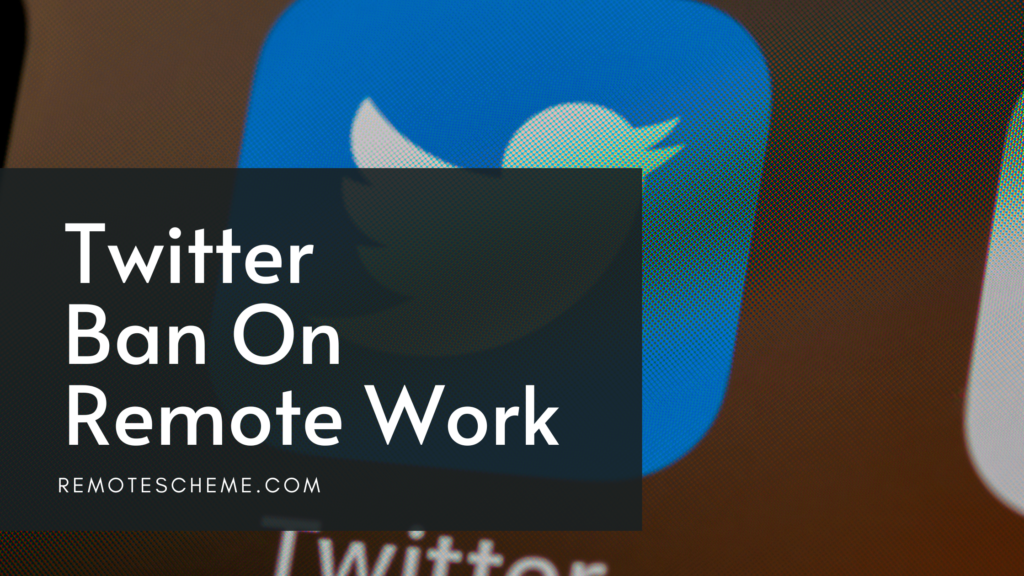Over the last couple of years, companies worldwide have changed their perception of work life to include a more homey feel—literally.
Corporations like Amazon, Lyft, and Spotify are even trying to embrace a fully remote work environment instead of a hybrid or an office one.
However, one problem that stands in their way is how to overcome the challenges of managing a remote team.
So, today, we’re going to discuss some of the issues you might face and how to overcome them. Let’s begin!
7 Challenges All Remote Teams Face
There are many challenges remote team managers have to deal with, but these seven ones stand above the rest
#1. Communication Breakdowns
In a typical office environment, people meet and talk by their desks, in the break room, or even next to the water cooler in the hallway.
During these short moments, they often discuss new ideas and how they can implement them to improve their work and make things easier.
In a remote environment, on the other hand, employees must plan any type of communication first.
The spur-of-the-moment meetings are almost impossible, with everyone spread out across the country, working on different things.
Moreover, strictly written communications open the doorway to a lot of misinterpretation.
For instance, you could misread e-mails because there’s no obvious tone or contextual clues or miss them entirely.
Of course, this leads to a lot of back-and-forth and frustration, which can be a huge time drain—hence, it’s the first challenge on our list.
#2. Measuring Productivity
While working from home isn’t new, it didn’t exist on a large scale until the last couple of years. This presented questions that not many people thought about before.
Most importantly, how do you measure your employees’ productivity if you can’t see them performing? Instead, you only see the end result, making it hard to determine whether the job was easy or hard for them.
In a traditional work environment, you can find the boss moving from one desk to the other and observing each employee’s progress.
Bosses also tend to cut any water-cooler conversation short and tell everyone not to waste time and get back to work.
So, how exactly is that supposed to happen when you’re not in the same vicinity as your employee? How can you tell what your team members can handle?
#3. Time Zones
A key aspect of working remotely is that no worker is bound to a specific location with a set schedule.
Fortunately, this means no getting ready in the morning, no commute, and no worries about the weather or traffic.
However, this also means one extra thing: different time zones.
Getting your virtual team to get along when they live in the same time zone is complicated as it is.
Yet, if you add in the fact that some of them could be living on different continents, you’ll get a near-impossible mission to accomplish!
Your team could have someone working from the U.S. while someone else is stationed in Australia and then another in Germany just for the fun of it!
#4. Lack Of Equality
Working in an office with a team comes with the benefits of familiarity and camaraderie.
You know the team member’s personalities by heart; you see them daily and bounce ideas off each other.
Because of this, when you’re working in a hybrid environment—with a part of your team working from home—you unconsciously give more benefits to the office workers.
This is to say, you might find yourself inviting the office crew to more events, offering them more opportunities, and generally leaning on them more.
Sadly, this can leave the remote employees feeling left out and underappreciated.
#5. A Depleting Sense Of Morale And Belonging
If you’ve ever worked in an office, you know that sometimes employees have little traditions.
For instance, they bond over coffee in the break room and sometimes create little inside jokes—mainly at the expense of the newbies!
These little things—the jokes and conversations—help build a strong bond and a sense of belonging between the employees, like a community.
As a result, they begin to feel like they’re a part of something bigger, motivating them to work harder to prove themselves and help the company.
So, when you take away all this and turn it into e-mails and texts on slack, you lose that sense of community.
#6. Psychological Problems
Building on the last point, without the daily human interactions, you won’t only lose the sense of community, but you’ll gain a few negative mental issues.
Unfortunately, you might find yourself managing a remote team that suffers from loneliness and social isolation. This is because, as humans, we’re inherently social creatures.
Hence, even if we go out every weekend to meet friends, we still need a form of daily interaction.
Without it, you’ll often find at least one or two of your team members looking depressed or anxious.
#7. Team And Company Culture
As you can guess by now, so many of the issues on this list can be tracked down to one vital aspect—human interaction. This problem here is no different.
Most of the time, company cultures are defined, developed, and maintained in offices between employees. It could be through casual conversation, office parties, or professional meetings.
Depending on the employees, company goals, and industry, you can end up with a professional company culture or a fun, open, and energetic team.
Regardless, at the end of the day, team managers can easily control and refine the environment around them to build a culture conducive to productivity.
Sadly, however, this depends on the natural, daily interactions between employers and employees, which isn’t possible in a virtual work environment.
How Do You Effectively Manage A Remote Team?
The challenges of managing remote teams can seem overwhelming, but luckily, there are many strategies and solutions to help you overcome each one!
Here’s a quick rundown of some of the most helpful tips:
#1. Enhance Your Communication Channels
The importance of clear communication channels can’t be overstated. Communication helps your team understand its role and keeps it updated with new developments.
It also helps save time and effort by eliminating a lot of back and forth.
Nonetheless, this doesn’t mean simply telling your team members to e-mail you whenever they need. On the contrary, e-mails are often seen as a bit tedious and too professional.
Hence, they don’t foster the type of connection and openness you’d want from your team.
So while they’re necessary in most cases, you can keep things a bit more casual when it comes to a tight-knit team.
To battle this, search for innovative team communication tools that can help team members connect quickly and efficiently.
For instance, you can use Slack, Discord, or Microsoft Teams. These options allow you to send texts, call, or start a video chat to communicate better.
You can also use shared online calendars to keep your team informed about each other’s availability. Plus, this can help you adjust everyone’s workflow to accommodate their needs and the different time zones.
#2. Establish Metrics To Track Productivity
The easiest way to track your employees’ work is to create a set of basic standards for each task or project and see if they meet these standards.
For instance, you could create something similar to the following list:
- Respond to customer inquiries within 24 hours
- Create two blog posts weekly
- Write five social media posts weekly
- Create a new sales campaign and report within a weekly
Of course, your own list can tackle daily, monthly, and yearly milestones! The most important thing is to let your team members know they’re being observed and measured.
Tell them what you expect of them, any updates or changes in the project, and the general timeline to follow. This transparency will help build trust and accountability among your team.
You can also conduct mini one-on-one meetings with your employees to ensure they’re on the right path to meet the standards.
After all, the whole point of having this metric is to help the team improve and ensure that the project is moving forward.
Just remember, don’t micromanage! You’re only supposed to check in and evaluate them, not dictate what they’re supposed to do.
#3. Set A Feedback Loop
After you set the desired milestones and let your employees know about them, it’s time to start giving feedback to everyone.
Whether this feedback is to praise the co-worker’s job or to adjust something, giving feedback as often and as soon as possible is essential.
Hearing the words good job or keep up the excellent work is a great way to keep the morale up!
Most importantly, it helps the team members feel like they belong and that their work is appreciated. As a result, they’ll be motivated to do better and meet the milestones.
#4. Get Together Often
Though this may be tough to plan and execute, it’ll help if you can schedule a bi-weekly or monthly outing with your team members.
Seeing each other face-to-face can help you know each other and build connections that online meetings can’t quite achieve.
During these little meet-ups, you can do any of the following to help create a bond between your employees:
- Go karaoke and sing your hearts out
- Enjoy a competitive bowling game
- Visit a restaurant and learn more about each other
- Hit the park and enjoy a lunch picnic where everyone can enjoy the sun
Quick Recap
So, how do you overcome the challenges of managing a remote team? Apparently, it’s not that hard, but it isn’t easy, either!
You’ll need to work diligently to keep the communication lines flowing, create a culture of trust and respect, as well as find ways to get the team together in person!
This can seem overwhelming at first glance, but if you take it one step at a time, you’ll create a happy and productive remote team.




